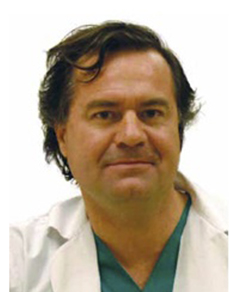This surgical case shows a maxillary sinus lift with the aid of Global implants by Sweden & Martina. The interest of the case lies in the height of the bone crest and in the simultaneous positioning of the two implants, demonstrating how the indication on whether to postpone the second surgical procedure depends mainly on the primary stability reached. The conformation of the receptor bed in the reduced thickness of the sinus crest is extremely important for lodging the implants during the same surgical procedure. Based on the type of implant, a small opening is planned so that the implant itself can perforate the crest with a torque of over 20 Nw. The design of the implant is also very important since a conformation with a more conical aspect allows introducing the actual implant into a narrower hole. This solution consists of positioning the implant apex inside the bed with the smallest diameter so that the body of the implant can then be screwed in a forced manner.
Greater primary stability can be reached, taking blood from the patient and injecting it at the base of the implant in contact with the crest and surrounded by grafting material. In this way, a sort of “sack” is formed that provides greater stability in the first weeks after surgery.
Some elements such as the torque, anatomy of the implant, drilling or the structure of the graft may require a surgical technique aimed at reducing rehabilitation times and, above all, patient discomfort.
The distribution methods and the concentration of grafting materials are also described. There are no scientific tests that identify the gold standard substance to be injected into the maxillary sinus; however, the author examines the parameters of the material considered most suited to the protocol adopted.


